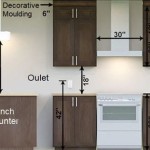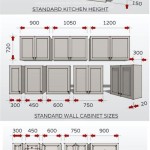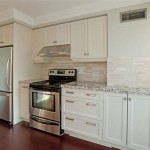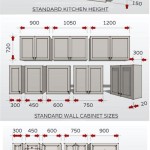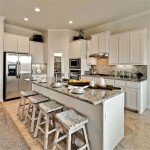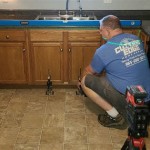Reglazing Kitchen Cabinets: A Comprehensive Guide
Kitchen cabinets are a focal point in any home. Their appearance significantly impacts the overall aesthetic of the kitchen. Over time, cabinets can become worn, faded, or simply outdated, leading homeowners to consider replacement. However, completely replacing cabinets can be a costly and disruptive undertaking. Reglazing presents a more affordable and less invasive alternative that can refresh the look of your existing cabinets.
Reglazing, also known as refinishing, involves applying a new coating to the cabinet surfaces. It is a process that can restore the color, sheen, and overall appearance of cabinets, effectively giving them a new lease on life. While simple in concept, successful reglazing requires careful preparation, the use of appropriate materials, and a meticulous application technique.
Understanding the Reglazing Process
The reglazing process is not simply about painting over existing cabinet finishes. It’s a multi-step process that involves careful preparation, application, and finishing to ensure a durable and aesthetically pleasing result. Understanding each step is crucial for deciding if reglazing is the right option and for properly evaluating the work being done.
Step 1: Preparation. The initial step is thorough cleaning. Cabinets must be free of grease, dirt, and any existing loose paint or varnish. This typically involves using a degreasing cleaner and scrubbing the surfaces. Following cleaning, the hardware (knobs, pulls, hinges) must be removed. This is essential to ensure a smooth and even finish. Damaged hardware can be replaced at this stage to further enhance the updated look.
After cleaning and hardware removal, sanding is performed. This creates a slightly roughened surface, providing the new glaze with a better adherence. The level of sanding depends on the existing finish. Glossy surfaces may require more aggressive sanding than matte finishes. Dust is meticulously removed after sanding to prevent imperfections in the final coating.
Step 2: Priming. Priming is a crucial step in ensuring proper adhesion and a uniform finish. A high-quality primer is applied evenly to all surfaces. The primer acts as a bonding agent between the existing cabinet surface and the new glaze. It also helps to seal the surface, preventing any existing stains or imperfections from bleeding through the new finish. The type of primer used depends on the material of the cabinets (wood, laminate, etc.).
Step 3: Glazing. Once the primer has dried completely, the glazing process begins. This involves applying one or more coats of the chosen glaze. The type of glaze used can vary, ranging from traditional paint to specialized epoxy coatings. The selection depends on the desired finish, durability requirements, and the cabinet material. Each coat of glaze is applied evenly and allowed to dry completely before the next coat is applied. Consistent application is key to avoiding streaks or unevenness.
Step 4: Topcoat. After the glaze has fully cured, a topcoat is often applied. This provides an extra layer of protection against scratches, chips, and everyday wear and tear. The topcoat can also affect the final sheen of the cabinets, ranging from matte to high-gloss. Like the glaze, the topcoat is applied evenly and allowed to dry thoroughly.
Step 5: Reassembly. The final step is reattaching the hardware. Cleaned or new hardware is carefully installed, ensuring proper alignment and function. Drawers and doors are reinstalled, and any necessary adjustments are made to ensure smooth operation. The end result is a refreshed set of cabinets with a durable and aesthetically pleasing finish.
Benefits of Reglazing Over Refacing or Replacing
Reglazing offers several advantages compared to other cabinet renovation options like refacing or complete replacement. Understanding these benefits can help homeowners make an informed decision about which approach best suits their needs and budget.
Cost Savings. Reglazing is generally the most cost-effective option. It avoids the expense of purchasing new cabinets or even new cabinet doors and drawer fronts. The primary costs associated with reglazing are the materials (cleaners, primer, glaze, topcoat) and labor, if hiring a professional. The cost savings can be significant, especially for larger kitchens with numerous cabinets.
Minimal Disruption. Reglazing is less disruptive than refacing or replacing. It typically requires less time to complete, and it generates less mess. While the kitchen will be temporarily unusable during the process, the disruption is usually limited to a few days, compared to the weeks often required for refacing or replacing. Because the existing cabinet boxes remain in place, there’s no need to remove plumbing or electrical fixtures, further minimizing disruption.
Environmentally Friendly. Reglazing is a more environmentally conscious choice. It reduces the amount of waste generated by avoiding the disposal of old cabinets. By preserving the existing cabinets, homeowners can reduce their environmental footprint and contribute to a more sustainable approach to home renovation. It also reduces the need for new materials, conserving resources used in manufacturing new cabinets.
Customization Options. Reglazing offers a wide range of customization options. Homeowners can choose from a variety of colors, sheens, and glaze types to achieve their desired look. It allows for personalization and the ability to match the cabinets to other elements in the kitchen, such as countertops, flooring, and appliances. Techniques like antiquing or distressing can also be applied during the glazing process to create a unique and customized finish.
Preservation of Existing Cabinet Structure. Reglazing preserves the existing cabinet structure, which can be advantageous if the cabinets are well-built or have sentimental value. If the cabinets are made of solid wood or have a unique design, reglazing allows homeowners to retain these features while updating the appearance. It avoids the risk of compromising the structural integrity of the cabinets by removing and replacing them.
Factors to Consider Before Reglazing
While reglazing offers numerous benefits, it’s not the right solution for every situation. Several factors should be considered before deciding whether or not to reglaze kitchen cabinets. These factors include the condition of the cabinets, the type of material they are made of, and the desired outcome.
Cabinet Condition. Reglazing is most effective on cabinets that are structurally sound. If the cabinets are warped, significantly damaged, or have extensive water damage, reglazing may not be a viable option. In such cases, refacing or replacement may be necessary to address the underlying structural issues. Minor repairs, such as filling small dents or scratches, can be addressed before reglazing, but significant damage will compromise the final result.
Cabinet Material. The type of material the cabinets are made of can affect the success of the reglazing process. Solid wood cabinets are generally the best candidates for reglazing, as they provide a stable and durable surface for the new finish. Laminate or veneer cabinets can also be reglazed, but the process may require more preparation and specialized primers to ensure proper adhesion. Cabinets made of particleboard or MDF (medium-density fiberboard) may not be suitable for reglazing if they are damaged or have water damage, as these materials can easily swell and crumble.
Desired Outcome. The desired outcome should also be considered. If the goal is simply to refresh the existing color or sheen of the cabinets, reglazing is an excellent option. However, if the goal is to significantly change the style of the cabinets, such as from a traditional to a modern design, refacing or replacement may be more appropriate. Reglazing primarily focuses on updating the surface finish, while refacing or replacement allows for more extensive modifications to the cabinet doors, drawer fronts, and overall design.
DIY vs. Professional Reglazing. Homeowners should also consider whether to tackle the reglazing project themselves or hire a professional. DIY reglazing can save money, but it requires time, patience, and attention to detail. It also requires the proper tools and equipment, such as sanders, spray guns, and safety gear. Professional reglazing, on the other hand, offers the advantage of expertise and experience. Professionals have the knowledge and skills to properly prepare the cabinets, apply the glaze evenly, and achieve a durable and aesthetically pleasing finish. The decision depends on the homeowner's skill level, available time, and budget.
Ventilation. Adequate ventilation is essential during the reglazing process. The fumes from cleaners, primers, glazes, and topcoats can be harmful, so it’s important to work in a well-ventilated area or to use a respirator. Protecting surrounding surfaces with drop cloths and masking tape is also crucial to prevent overspray and spills.
Color Selection. Choosing the right color is a critical aspect of the reglazing process. Consider the existing color scheme of the kitchen, including the countertops, flooring, and appliances. Test samples of different colors on a small, inconspicuous area of the cabinets to see how they look in the actual lighting conditions. Take into account the natural light in the kitchen and the desired mood or aesthetic.
In conclusion, reglazing kitchen cabinets is a viable option for homeowners seeking to update the look of their kitchen without the expense and disruption of a full replacement. By understanding the reglazing process, its benefits, and the factors to consider, homeowners can make an informed decision that best suits their needs and budget. Careful planning, proper preparation, and meticulous execution are essential for achieving a successful and long-lasting result.

Kitchen Cabinet Reglazing And Resurfacing Tampa Fl

Kitchen Reglazing Refinishing 800 995 5595 Artistic

Kitchen Cabinet Reglazing And Resurfacing Tampa Fl

The Fast Affordable Way To Upgrade Your Kitchen Cabinet Refinishing

Cabinet Refinishing Reglazing Resurfacing Painting In Fort Lauderdale Davie

Kitchen Cabinet Refinishing And Reglazing Services Nyc

Kitchen Cabinet Refinishing And Reglazing Services Nyc

Before And After Kitchen Cabinet Reglazing In Clayton Nc Cabinets

The Best Way To Reglaze Your Kitchen Respray Dublin

Why Countertop Refinishing Is Ideal For Al Properties
Related Posts

